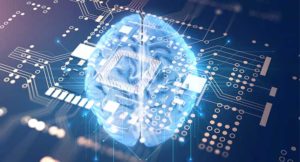Deep Learning Vs. Machine Learning – Key differences

As the world accelerates towards a future dominated by artificial intelligence, machine learning, and deep learning have emerged as two key driving forces. These two subsets of artificial intelligence have often been used interchangeably, yet they differ significantly in terms of how they operate, their applications, and the nature of the problems they are designed to solve. This article will delve into the intricate world of machine learning and deep learning, offering insights into their fundamental differences and individual capabilities.
Defining Machine Learning
Machine learning (ML) is a stimulating branch of artificial intelligence that empowers computers to learn from data and make informed decisions. The striking feature of machine learning is that it doesn’t require explicit programming. Instead, it uses sophisticated algorithms and statistical models to analyze patterns in data and draw conclusions based on them.
ML models improve their accuracy as they interact with more data. They have the capacity to learn, adapt, and evolve from each interaction, making them remarkably flexible and efficient. These models are classified into three main types: supervised learning, unsupervised learning, and reinforcement learning. Each of these types has its unique learning approach, ranging from learning from labeled data and finding hidden patterns in data to learning from rewards and penalties. Machine learning has many applications, from filtering spam emails, enabling computer vision, and predictive analytics, to powering self-driving cars.
In recent years, the integration of machine learning in numerous industries has led to significant advancements. For example, machine learning algorithms have helped optimize logistics for supply chains, provided data-driven insights in healthcare for early disease detection, and personalized user experience in entertainment platforms.
The Concept of Deep Learning
On the other hand, deep learning takes inspiration from the human brain. It is a specialized subset of machine learning that uses artificial neural networks with numerous hidden layers to process data and create patterns for decision-making. The term “deep” in deep learning signifies the presence of multiple layers in the network, which are capable of learning complex patterns in large datasets.
Each layer of neurons in a deep learning model transforms the input data in a certain way to extract high-level features. This multilayer approach enables the model to solve complex problems that machine learning models might struggle with. The use of deep learning has paved the way for breakthroughs in various fields, such as image and speech recognition, natural language processing, social network filtering, and even medical diagnosis, where it helps in identifying diseases from complex medical images with incredible accuracy.
Differences Between Machine Learning and Deep Learning
Data Dependencies
The differences between machine learning and deep learning become apparent when we examine their relationship with data. Machine learning algorithms rely on structured data and rely heavily on manual feature extraction. Their performance improves with the size of the dataset, but after a certain point, additional data does not result in significant performance enhancements.
Deep learning algorithms, in contrast, are designed to handle large, complex, and unstructured data. Unlike machine learning, deep learning algorithms can automatically learn features from data, reducing the need for manual feature extraction. Moreover, deep learning models continually improve their performance as the dataset size increases. Given enough data, deep learning models can outperform machine learning models in tasks that involve high-dimensional data, such as image classification, speech recognition, and natural language processing.
Computational Requirements and Training Time
Machine learning models, being less computationally intensive, can operate on low-end systems. Their training times are relatively short, especially when working with smaller datasets. This makes them well-suited for applications where quick, efficient processing is a priority or where computational resources are limited.
In contrast, due to their complex architectures, deep learning models require high-performance hardware and substantial computational power. Training deep learning models can be time-consuming, particularly when working with larger datasets. Despite these challenges, the power and flexibility of deep learning make it an excellent choice for tasks that demand high levels of accuracy and can tolerate longer training times.
Interpretability
Machine learning models are often preferred when interpretability is a key requirement. Certain machine learning models, like decision trees or linear regression, provide clear and easily understandable rules for their predictions. This transparency is vital in fields such as healthcare or finance, where understanding the decision-making process is crucial for accountability and trust.
In contrast, deep learning models are often considered “black boxes” due to their complex nature. Their internal workings are not easily interpretable, making it difficult to understand how they arrive at their decisions. This lack of transparency can be a hurdle when using deep learning in fields requiring interpretability.
Performance and Precision
Machine learning models excel at tasks with smaller data sets or tasks where interpretability is a primary concern. They can deliver highly efficient results in scenarios with limited data and can be easily interpreted by humans.
On the other hand, deep learning models excel in environments where large volumes of training data are available and high performance is the priority. These models have achieved unprecedented accuracy levels in complex tasks such as image recognition, speech recognition, and language translation, even outperforming humans in some cases.
The Interplay Between Machine Learning and Deep Learning
Despite these differences, it’s crucial to remember that deep learning and machine learning are not rival technologies. Instead, they represent different ends of the artificial intelligence spectrum, each with its strengths and weaknesses. Deep learning is a subset of machine learning and depends on its principles to operate. Choosing between them isn’t necessarily about picking the better one; it depends more on the specific requirements of the task at hand, including the complexity of the problem, the volume and type of available data, and the computational resources at disposal.
Getting Started with Machine Learning
If the world of machine learning piques your interest, there’s no better time than now to start exploring it. There is an abundance of resources available for everyone, regardless of whether you’re a beginner taking your first steps or an experienced professional aiming to update your knowledge. Free Online Courses are a great place to start your journey. They provide an in-depth understanding of the fundamentals of machine learning, including its different types, how they work, and real-world applications, ensuring a holistic learning experience.
Deep Dive into Deep Learning
If the complexity and power of deep learning intrigue you and you aspire to master this field, a Free Introduction to Deep Learning Course can be an excellent starting point. Designed to provide a solid foundation in deep learning, this course dives into the intricacies of artificial neural networks, various architectures, and the role of deep learning in problem-solving. The course will empower you to comprehend and design your deep learning models, opening a new world of opportunities.
Conclusion
Artificial intelligence is an ever-evolving field, with machine learning and deep learning being its two most prominent pillars. Each of these pillars brings its unique strengths to the table, and understanding the differences between them helps us use them effectively in different situations. As we continue to innovate and advance these technologies, the potential applications and benefits they can bring are limitless. Whether it’s driving autonomous vehicles, diagnosing diseases, translating languages, or powering personalized recommendations, machine learning and deep learning have the potential to redefine the future.
About the Author
Nisha Nemasing Rathod works as a Technical Content Writer at Great Learning, where she focuses on writing about cutting-edge technologies like Cybersecurity, Software Engineering, Artificial Intelligence, Data Science, and Cloud Computing. She holds a B.Tech Degree in Computer Science and Engineering and is knowledgeable about various programming languages. She is a lifelong learner, eager to explore new technologies and enhance her writing skills.






